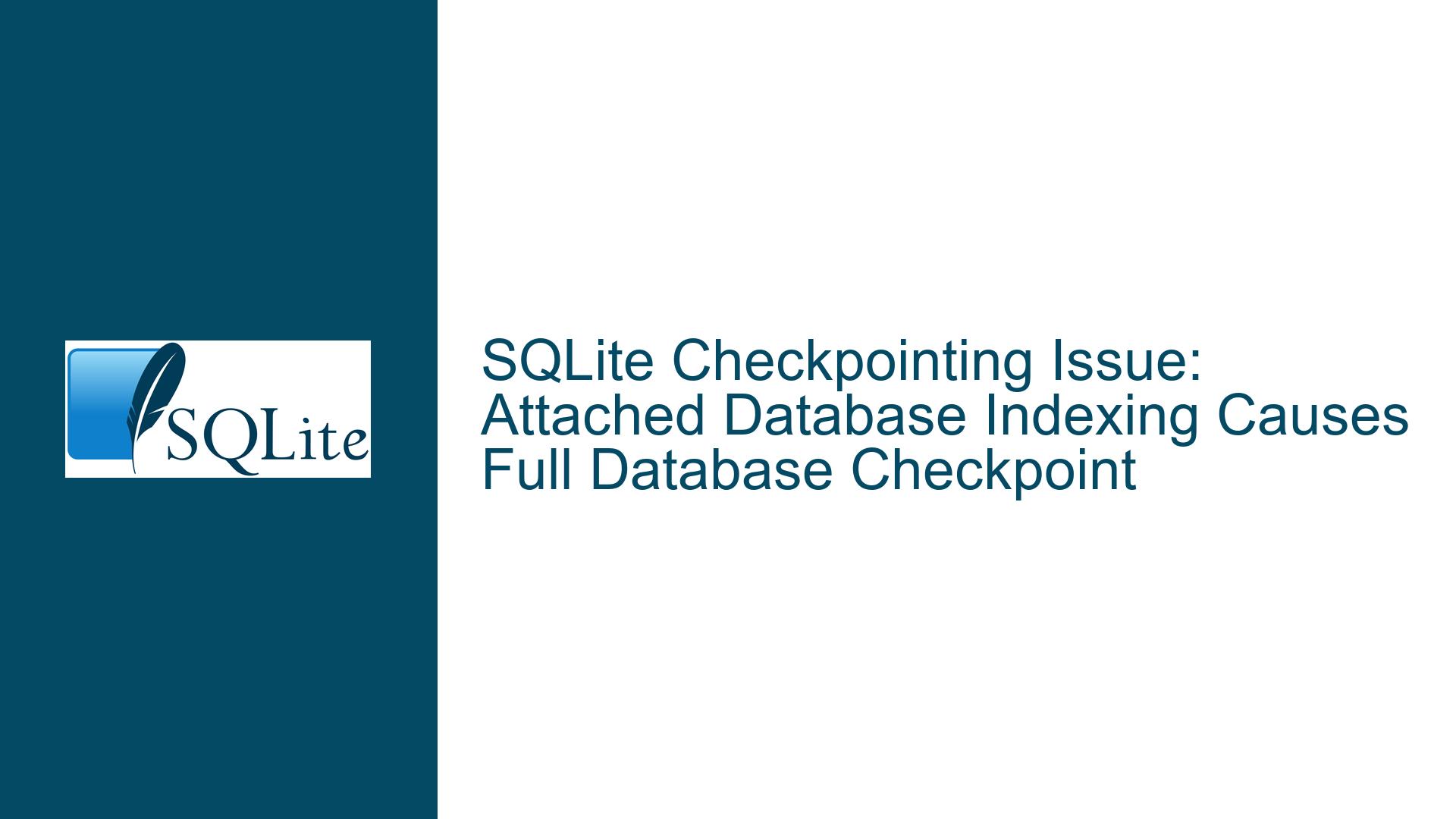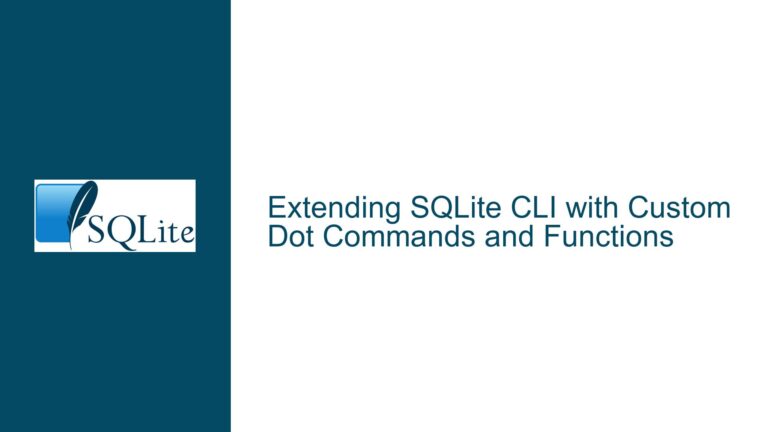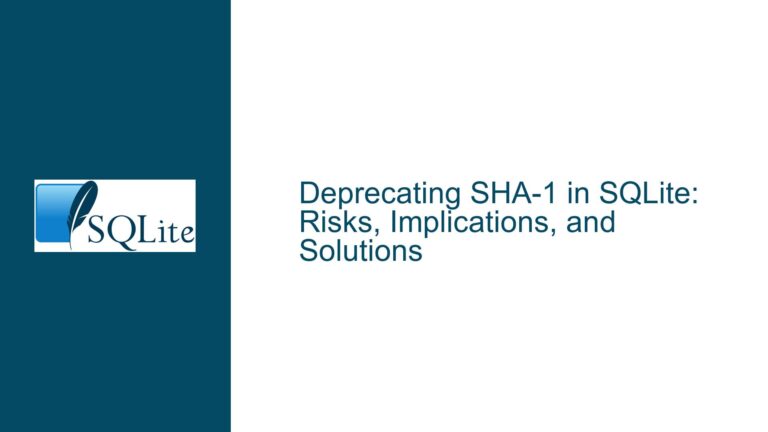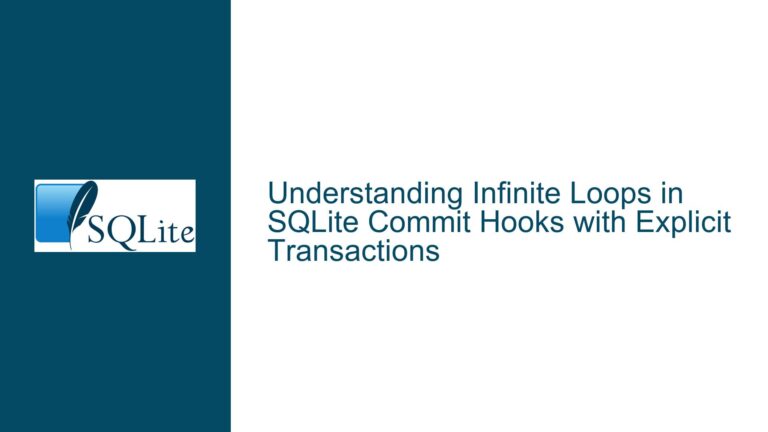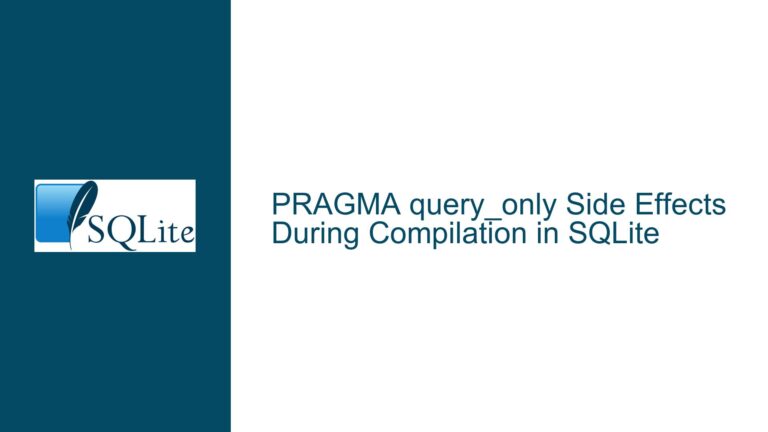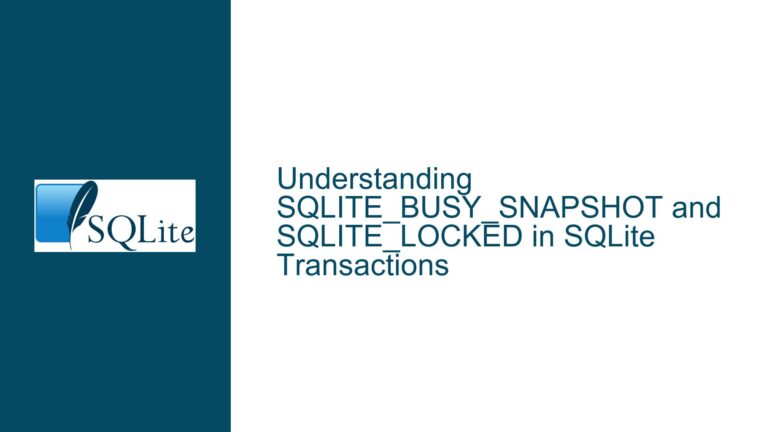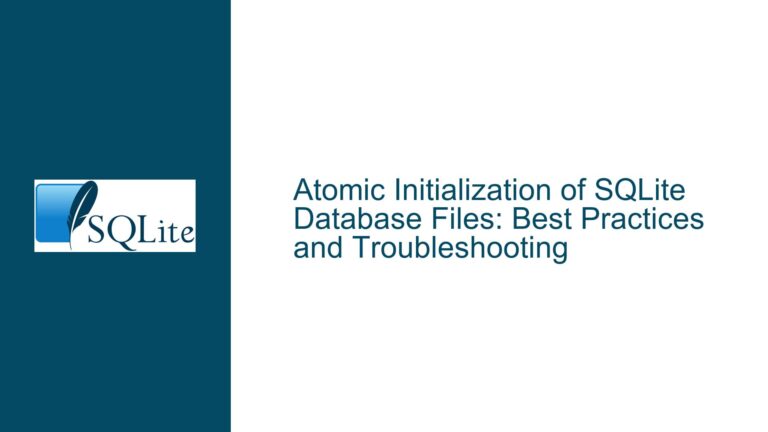SQLite Checkpointing Issue: Attached Database Indexing Causes Full Database Checkpoint
SQLite Checkpointing Mechanism and Database Indexing Misalignment
The core issue revolves around the SQLite checkpointing mechanism and how it handles database indexing, particularly when multiple databases are attached. SQLite uses a Write-Ahead Logging (WAL) mode to enhance performance, and checkpointing is a critical operation that transfers the contents of the WAL file back into the main database file. However, the current implementation has a flaw in how it interprets the index of attached databases, leading to unintended behavior.
In SQLite, the aDb array within the sqlite3 structure holds references to all attached databases. The first two slots, aDb[0] and aDb[1], are reserved for the main and temp databases, respectively. Additional databases can be attached, up to the limit defined by SQLITE_MAX_ATTACHED. The problem arises because the code assumes that the maximum valid index for aDb is SQLITE_MAX_ATTACHED, but in reality, the maximum index can be SQLITE_MAX_ATTACHED + 1 due to the reserved slots.
This misalignment causes the checkpointing logic to misinterpret the index value when checkpointing the 9th attached database. Instead of checkpointing only the specified database, the code erroneously checkpoints all attached databases. This behavior is triggered because the code uses SQLITE_MAX_ATTACHED as a special value to indicate that all databases should be checkpointed, but due to the indexing issue, this condition is met unexpectedly.
Incorrect Indexing Logic and Reserved Database Slots
The root cause of this issue lies in the incorrect indexing logic and the handling of reserved database slots. The sqlite3Checkpoint() function is designed to checkpoint a specific database or all databases, depending on the value of the iDb parameter. When iDb is set to SQLITE_MAX_ATTACHED, the function is supposed to checkpoint all databases. However, the current implementation fails to account for the reserved slots in the aDb array, leading to incorrect behavior.
The aDb array has two reserved slots for the main and temp databases, which means that the maximum valid index for attached databases is SQLITE_MAX_ATTACHED + 1. The code, however, assumes that the maximum index is SQLITE_MAX_ATTACHED, leading to an off-by-one error. This error causes the checkpointing logic to misinterpret the index of the 9th attached database, triggering the checkpointing of all databases instead of just the specified one.
The issue is further compounded by the use of assertions in the code. The assertion assert(iDb >= 0 && iDb < SQLITE_MAX_ATTACHED) is incorrect because it does not account for the reserved slots. This assertion should be modified to assert(iDb >= 0 && iDb < SQLITE_MAX_DATABASES), where SQLITE_MAX_DATABASES is defined as SQLITE_MAX_ATTACHED + 2 to include the reserved slots.
Implementing Correct Indexing and Checkpointing Logic
To resolve this issue, the indexing logic in the sqlite3Checkpoint() function must be corrected to account for the reserved slots in the aDb array. The following changes are necessary:
Define
SQLITE_MAX_DATABASES: Introduce a new constantSQLITE_MAX_DATABASESthat accounts for the reserved slots. This constant should be defined asSQLITE_MAX_ATTACHED + 2to include themainandtempdatabases.Update Assertions: Modify the assertions in the code to use
SQLITE_MAX_DATABASESinstead ofSQLITE_MAX_ATTACHED. This ensures that the code correctly validates the index values.Correct Checkpointing Logic: Update the checkpointing logic to use
SQLITE_MAX_DATABASESas the special value for checkpointing all databases. This ensures that the function correctly interprets the index values and only checkpoints the specified database.
The following code changes implement these fixes:
#define SQLITE_MAX_DATABASES (SQLITE_MAX_ATTACHED + 2)
assert(iDb >= 0 && iDb < SQLITE_MAX_DATABASES);
if (i == iDb || iDb == SQLITE_MAX_DATABASES) {
// Checkpoint the specified database or all databases
}
These changes ensure that the checkpointing logic correctly handles the reserved slots in the aDb array and prevents the unintended checkpointing of all databases. By defining SQLITE_MAX_DATABASES and updating the assertions and checkpointing logic, the code will correctly interpret the index values and only checkpoint the specified database.
In addition to these code changes, it is important to thoroughly test the updated implementation to ensure that it behaves as expected. This includes testing with multiple attached databases, including the 9th attached database, to verify that the checkpointing logic correctly handles all cases.
By addressing the indexing issue and implementing the correct checkpointing logic, this solution ensures that SQLite’s checkpointing mechanism works as intended, providing reliable and efficient database operations.
